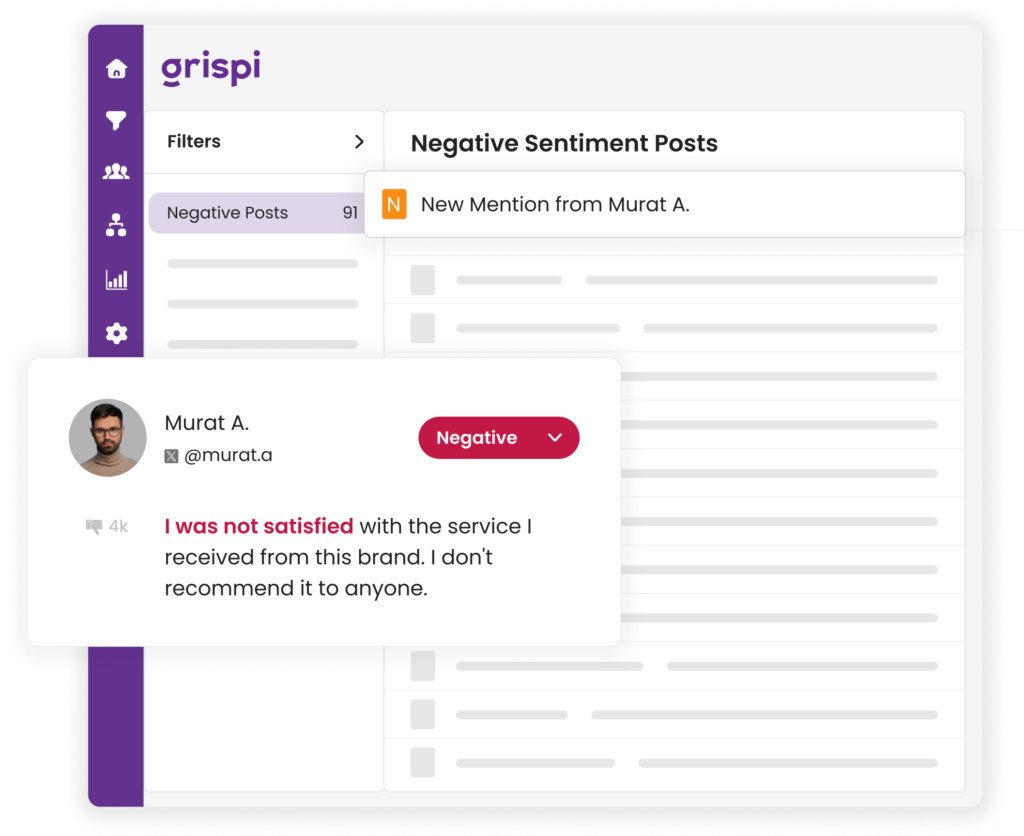Common Customer Complaints: Examples and Solutions
- April 11, 2025
In the realm of business, customer complaints are vital feedback that can drive improvements and bolster customer satisfaction. Understanding the types of complaints and how to effectively address them is essential for businesses to thrive in today’s competitive market.
In this article, we explore the nature of customer complaints, strategies for handling them, and tailored solutions for common issues, empowering businesses to turn dissatisfaction into loyalty.
What is a Customer Complaint?
Customer complaints are expressions of dissatisfaction or grievances raised by customers regarding products, services, or experiences provided by a business. These complaints can stem from various issues such as product defects, poor service delivery, billing errors, or inadequate communication. While complaints are often seen as negative feedback, they present valuable opportunities for businesses to identify areas for improvement and enhance customer satisfaction.

What are the Types of Customer Complaints?
Customer complaints can be categorized into several types based on the nature of the issue:
Product Quality Issues: These complaints arise when customers encounter defects, malfunctions, or discrepancies in the quality of products they have purchased.
- Service Delivery Problems: Complaints related to service delivery typically involve issues such as delays, unfulfilled promises, or unsatisfactory interactions with staff members.
- Billing and Pricing Disputes: Customers may lodge complaints regarding incorrect billing, overcharges, hidden fees, or discrepancies in pricing.
- Communication Breakdowns: Complaints in this category arise due to ineffective communication channels, lack of clarity in instructions, or failure to address customer inquiries promptly.
- Policy and Process Concerns: Customers may express dissatisfaction with company policies, return procedures, or terms of service, feeling they are unfair or inconvenient.
3 Ways to Successfully Handle Customer Complaints
Successfully managing customer complaints is crucial for maintaining customer loyalty and reputation. Here are three effective strategies for handling complaints:
Prompt Response
Acknowledge customer complaints promptly, demonstrating attentiveness and concern. Timely responses reassure customers that their concerns are being taken seriously, fostering trust and goodwill.
Active Listening
Practice active listening when engaging with customers to understand the root cause of their complaints fully. Empathize with their perspective, validate their feelings, and assure them that their feedback is valued.
Transparent Resolution
Be transparent and honest in addressing customer complaints, providing clear explanations and viable solutions. Strive to resolve issues swiftly and effectively, keeping customers informed throughout the process to manage expectations and rebuild trust.

5 Different Customer Complaints and Solutions
Problem 1: Product Quality Issues
Solutions:
- Investigate Thoroughly: Conduct a detailed investigation into the reported product defects or quality issues to identify the root cause.
- Offer Replacements or Refunds: Provide customers with options for replacements, refunds, or exchanges to rectify the issue and restore satisfaction.
- Implement Quality Control Measures: Take proactive steps to improve product quality by implementing stringent quality control measures in manufacturing processes.
Problem 2: Service Delivery Problems
Solutions
- Apologize Sincerely: Offer a genuine apology for any inconvenience caused by service delivery problems, acknowledging the impact on the customer.
- Rectify the Situation: Take immediate steps to rectify the issue, whether it involves expedited delivery, additional assistance, or compensatory measures.
- Review and Improve Processes: Conduct a thorough review of service delivery processes to identify areas for improvement and prevent similar issues in the future.
Problem 3: Billing and Pricing Disputes
Solutions
- Review Billing Records: Thoroughly review billing records and transactions to identify any errors or discrepancies.
- Provide Transparent Explanations: Clearly explain the billing or pricing discrepancies to the customer, providing evidence or documentation as needed.
- Offer Adjustments or Discounts: Offer adjustments, refunds, or discounts to rectify any overcharges or billing errors and ensure fair treatment of the customer.
Problem 4: Communication Breakdowns
Solutions
- Improve Communication Channels: Enhance communication channels such as customer support hotlines, live chat, or email to ensure prompt and effective communication.
- Provide Clear Instructions: Offer clear and concise instructions to customers, addressing any confusion or misunderstandings that may arise.
- Follow Up: Follow up with customers after resolving the issue to ensure satisfaction and address any lingering concerns, demonstrating commitment to customer care.

Problem 5: Policy and Process Concerns
Solutions
- Listen to Customer Feedback: Listen attentively to customer concerns regarding company policies or processes, acknowledging their feedback and suggestions.
- Review and Revise Policies: Conduct a review of existing policies and processes based on customer feedback, making necessary revisions to enhance customer satisfaction.
- Communicate Policy Changes: Clearly communicate any changes to policies or procedures to customers, providing rationale and addressing any potential concerns or confusion.
Problem 6: Late Deliveries
Solutions
- Analyze the Delivery Process: Review the supply chain operations to identify bottlenecks causing the delay.
- Notify the Customer: If a delay is expected, inform the customer in advance and provide an estimated delivery date.
- Offer Alternatives: Provide compensation options such as free shipping, a coupon, or an upgraded product to affected customers.
Problem 7: Product Mismatch / Not as Expected
Solutions
- Improve Product Descriptions: Enhance product pages with detailed explanations, real customer photos, and size specifications to reduce expectation gaps.
- Provide Easy Returns: Offer a quick and hassle-free return or exchange process in case of dissatisfaction.
- Deliver Personalized Support: Communicate directly with the customer to understand their expectations and propose tailored solutions.
Problem 8: Technical or Software Malfunctions
Solutions
- Provide Prompt Technical Support: Assign the tech team immediately to identify and resolve the issue.
- Offer Temporary Workarounds: Suggest alternative ways for customers to continue using the product until a permanent fix is implemented.
- Communicate System Updates: Inform customers transparently about regular maintenance and updates to prevent future issues.
Problem 9: Inaccessibility of Support Team
Solutions
- Extend Support Hours: Increase support availability during high-demand periods or offer weekend support.
- Implement Multi-Channel Support: Enable customers to reach support via email, phone, live chat, or social media.
- Use Automated Responses: If response times are delayed, send an auto-reply informing the customer and assuring them of a follow-up.
Problem 10: Retaining a Dissatisfied Customer
Solutions
- Show Empathy and Listen: Genuinely listen to the customer’s experience and express understanding.
- Provide Personalized Compensation: Instead of standard solutions, offer a gesture or compensation tailored to the customer’s issue.
- Invite to Loyalty Program: Rebuild trust by including the customer in special campaigns or loyalty programs.
Manage Customer Complaints with Grispi

Grispi offers a comprehensive solution for effectively managing customer complaints. The platform centralizes customer inquiries from multiple communication channels—including call center, email, live chat, chatbot, and social media—into a single system, enabling streamlined tracking and management.
Thanks to its automation features, repetitive tasks are handled automatically, helping accelerate processes and reduce human errors. Grispi’s powerful reporting and analytics tools automatically track key customer service metrics, providing valuable insights for performance evaluation and continuous improvement.
Additionally, with customizable ticket management, incoming requests are categorized based on type and routed to the appropriate workflows, ensuring efficient resolution of customer complaints. Grispi’s cloud-based architecture offers flexibility and scalability, helping businesses manage customer issues more efficiently.
Contact us to try Grispi free of charge for 14 days, where you can track your customers’ demands and complaints on a single panel.
Contact Us
Fill out the form for detailed information and demo account, let us call you.
